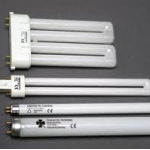Lighting
 According to the U.S. Energy Information Administration (EIA), lighting consumes the majority of energy (defined by kilowatt hours per square foot) utilized in commercial and industrial applications. In addition, over 80% of the lighting in the U.S. was installed before 1986. By the end
According to the U.S. Energy Information Administration (EIA), lighting consumes the majority of energy (defined by kilowatt hours per square foot) utilized in commercial and industrial applications. In addition, over 80% of the lighting in the U.S. was installed before 1986. By the end
of 2014, over 500 million incandescent, T12 fluorescent, and a variety of halogen bulbs still in use will become obsolete. In fact, as of 2013, the rate of adoption of energy efficient lighting in the U.S. was less than 2%. For exterior and interior applications, EAG utilizes three technologies: induction, LED and highly-efficient fluorescent.
Induction
 Invented by Nikola Tesla over 100 years ago, induction lighting is one of the oldest and most energy efficient lighting technologies in the world. Although the initial cost is roughly the same as LED technology, its 100,000 hour life and 10 year warranty allows it to achieve a better ROI than any other technology available today.
Invented by Nikola Tesla over 100 years ago, induction lighting is one of the oldest and most energy efficient lighting technologies in the world. Although the initial cost is roughly the same as LED technology, its 100,000 hour life and 10 year warranty allows it to achieve a better ROI than any other technology available today.
 An external induction bulb is basically a fluorescent bulb, but it does not contain a filament. Rather, electromagnets are wrapped around the outside of the tube. High frequency energy is sent to the electromagnet which produces a strong magnetic field. The magnetic field excites an argon gas which emits UV light and, just as in a fluorescent tube, the UV light is converted into a visible light by the phosphor coating on the inside of the tube. Induction lighting is well-suited for demanding industrial and commercial applications, offering the following advantages:
An external induction bulb is basically a fluorescent bulb, but it does not contain a filament. Rather, electromagnets are wrapped around the outside of the tube. High frequency energy is sent to the electromagnet which produces a strong magnetic field. The magnetic field excites an argon gas which emits UV light and, just as in a fluorescent tube, the UV light is converted into a visible light by the phosphor coating on the inside of the tube. Induction lighting is well-suited for demanding industrial and commercial applications, offering the following advantages:
• Long Life • Cool Operating Temperature
• Environmentally Friendly • Extreme Temperature Operation
• Low Energy Consumption • High Quality of Light & Minimal Lumen Depreciation
• Instant On & Hot Re-Strike • Considerable Operational & Maintenance Cost Savings
LED
 Light emitting diodes (LED’s) were originally developed for use as indicator lamps in many devices. However, in the last 30 years, LED’s have been developed for commercial and industrial lighting applications.
Light emitting diodes (LED’s) were originally developed for use as indicator lamps in many devices. However, in the last 30 years, LED’s have been developed for commercial and industrial lighting applications.
Since LED’s are temperature and current sensitive, extremes of either can shorten their life significantly. Arranged in patterns, LED light fixtures are very good at providing focused light. While it can be difficult to apply LED’s to applications needing a spherical light field, different fields of light can be manipulated by the application of optics or “lenses”.
Although a relatively expensive technology, pricing continues to improve and significant design advancements have been achieved. LED’s offer the following advantages:
• Radiates Little Heat • Unlimited Shapes & Sizes
• Wide Range of Color • High Lumen/Watt Efficiency
• Long Life & Slow Failures • Instant On & Dimming Capabilities
• Environmentally Friendly
Fluorescent
 Although available in a variety of sizes and designs, typical applications are linear tubes for industrial and commercial office applications. Unlike induction lighting, fluorescent lighting uses an internal filament to introduce an electric current which excites a mercury vapor gas producing UV light. It is converted into a visible light by the phosphor coating on the inside of the tube.
Although available in a variety of sizes and designs, typical applications are linear tubes for industrial and commercial office applications. Unlike induction lighting, fluorescent lighting uses an internal filament to introduce an electric current which excites a mercury vapor gas producing UV light. It is converted into a visible light by the phosphor coating on the inside of the tube.
Although very inexpensive and highly efficient in converting electrical power into useful light, fluorescent lighting has limited applications and many disadvantages compared to LED and induction. Because they contain mercury, many fluorescent lamps are classified as hazardous waste, and due to their temperature sensitivity, they are typically used only in room-temperature applications. In addition, other common issues include ballast failures, flickering and short life spans in applications with high on-off cycling.
Disadvantages aside, they are an attractive solution for those applications with limited operating hours. Of EAG’s lighting technology offering, fluorescent has the lowest initial cost. And with an operating life of up to 75,000 hours, EAG’s product line offers an attractive ROI.